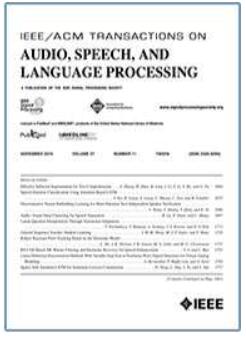EchoScan: Scanning Complex Room Geometries via Acoustic Echoes
IF 5.1
2区 计算机科学
Q1 ACOUSTICS
IEEE/ACM Transactions on Audio, Speech, and Language Processing
Pub Date : 2024-10-23
DOI:10.1109/TASLP.2024.3485516
引用次数: 0
Abstract
Accurate estimation of indoor space geometries is vital for constructing precise digital twins, whose broad industrial applications include navigation in unfamiliar environments and efficient evacuation planning, particularly in low-light conditions. This study introduces EchoScan, a deep neural network model that utilizes acoustic echoes to perform room geometry inference. Conventional sound-based techniques rely on estimating geometry-related room parameters such as wall position and room size, thereby limiting the diversity of inferable room geometries. Contrarily, EchoScan overcomes this limitation by directly inferring room floorplan maps and height maps, thereby enabling it to handle rooms with complex shapes, including curved walls. The segmentation task for predicting floorplan and height maps enables the model to leverage both low- and high-order reflections. The use of high-order reflections further allows EchoScan to infer complex room shapes when some walls of the room are unobservable from the position of an audio device. Herein, EchoScan was trained and evaluated using RIRs synthesized from complex environments, including the Manhattan and Atlanta layouts, employing a practical audio device configuration compatible with commercial, off-the-shelf devices.EchoScan:通过声学回声扫描复杂的房间几何结构
准确估计室内空间几何形状对于构建精确的数字孪生体至关重要,其广泛的工业应用包括在陌生环境中导航和高效的疏散规划,尤其是在弱光条件下。本研究介绍了一种利用声学回声进行房间几何推断的深度神经网络模型--EchoScan。传统的基于声音的技术依赖于估计与房间几何相关的参数,如墙壁位置和房间大小,从而限制了可推断房间几何形状的多样性。与此相反,EchoScan 通过直接推断房间平面图和高度图来克服这一限制,从而能够处理形状复杂的房间,包括弯曲的墙壁。预测平面图和高度图的分割任务使模型能够利用低阶和高阶反射。当从音频设备的位置无法观察到房间的某些墙壁时,高阶反射的使用进一步使 EchoScan 能够推断出复杂的房间形状。在这里,EchoScan 使用从复杂环境(包括曼哈顿和亚特兰大布局)合成的 RIR 进行了训练和评估,并采用了与商用现成设备兼容的实用音频设备配置。
本文章由计算机程序翻译,如有差异,请以英文原文为准。
求助全文
约1分钟内获得全文
求助全文
来源期刊

IEEE/ACM Transactions on Audio, Speech, and Language Processing
ACOUSTICS-ENGINEERING, ELECTRICAL & ELECTRONIC
CiteScore
11.30
自引率
11.10%
发文量
217
期刊介绍:
The IEEE/ACM Transactions on Audio, Speech, and Language Processing covers audio, speech and language processing and the sciences that support them. In audio processing: transducers, room acoustics, active sound control, human audition, analysis/synthesis/coding of music, and consumer audio. In speech processing: areas such as speech analysis, synthesis, coding, speech and speaker recognition, speech production and perception, and speech enhancement. In language processing: speech and text analysis, understanding, generation, dialog management, translation, summarization, question answering and document indexing and retrieval, as well as general language modeling.
 求助内容:
求助内容: 应助结果提醒方式:
应助结果提醒方式:


